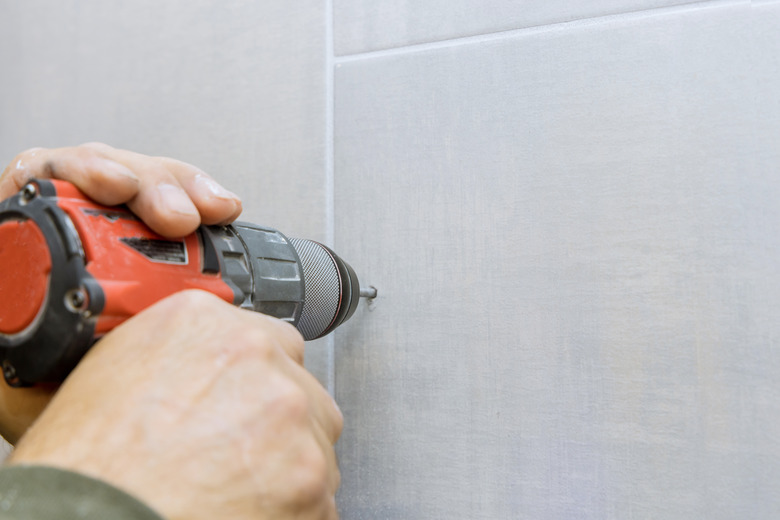How To Repair A Hole Drilled Into A Household Waterline
We may receive a commission on purchases made from links.
Even the best-planned home improvement projects can hit some snags, like accidentally drilling into a water line. If you immediately realize you hit the water pipe, you can prevent extensive water damage by shutting off the water and repairing the hole. How you repair the damage depends on the type of plumbing you have.
Shut Off the Water
Shut Off the Water
As soon as you realize you hit a plumbing line, turn off the water at the main shutoff valve. This is the fastest way to stop the water from running through the pipe. Shutting off the water relieves water pressure and minimizes water damage in your home. You'll need to keep the water off until you complete the repairs or have a plumber do the work.
Access the Damaged Pipe
Access the Damaged Pipe
Drilling into a water pipe often happens when you're drilling into your wall and don't realize there's plumbing behind it. If that's the case, you need to access the leak in the wall by removing a portion of the drywall. This gives you easier access to the pipes, allowing you to make the necessary repairs.
A drywall saw is an easy way to cut out pieces of wall to see the pipe. The amount of drywall you need to remove depends on the type of plumbing and the extent of the repairs needed. If you can fix it with a push-to-connect fitting, you only need a small access area. You'll need more access if you have to replace the entire pipe.
Use a Push-to-Connect Coupling
Use a Push-to-Connect Coupling
If your pipes are made of copper or CPVC, you can use a push-to-connect slip coupling or repair coupling to fix the damaged section. There are several brands of push-to-connect plumbing fittings for the job, including the SharkBite slip coupling. Make sure you get the correct size of slip coupling based on the size of the pipe. Always follow the instructions of the manufacturer you choose.
The general method for using a push-to-connect slip coupling is to remove the small section of pipe that's damaged using a tube cutter, ensuring you cut it square. Use a deburring tool to deburr the pipe if it's made of copper and clean the end of the tube. Measure and mark the insertion depth based on the specifications of the push-to-connect fitting you use.
The slip end goes onto the pipe first. Push it onto the pipe until it stops sliding, which happens when the pipe reaches the roll stop mark. You'll then need to use a disconnect tool for the brand of fitting you're using to disengage it and slide it back toward the other cut side of the pipe. Move it until it reaches the depth marked on the pipe. Then turn the water back on and make sure it doesn't leak.
Replace the Section
Replace the Section
If you have galvanized pipe plumbing, the best option is to replace the punctured section. You'll need to replace the entire pipe between the two nearest threaded fittings. To do this, you'll need to cut away the section of the pipe, leaving some of it at both ends near the threaded fittings.
Then, use two pipe wrenches — one to hold the fitting and one to hold the remaining section of pipe. Turn the pipe using the wrench for leverage to remove it from the fitting. Using penetrating oil can help if you have difficulty turning the pipe. Then, you're ready to replace the pipe with the new section. Check the connections by turning on the water and watching the joints.
Avoid Using Patches
Avoid Using Patches
Patches and temporary fixes aren't recommended for water supply lines. Because the lines are constantly pressurized, the patches typically don't hold for long. This can result in a secondary leak that you might not notice immediately, potentially causing major water damage.
